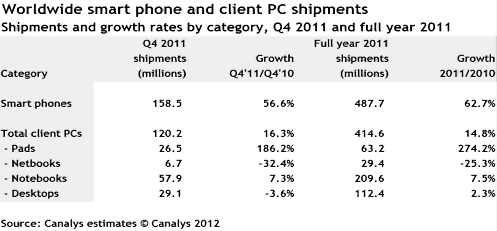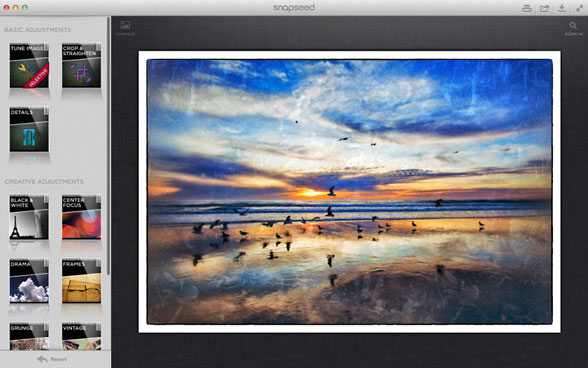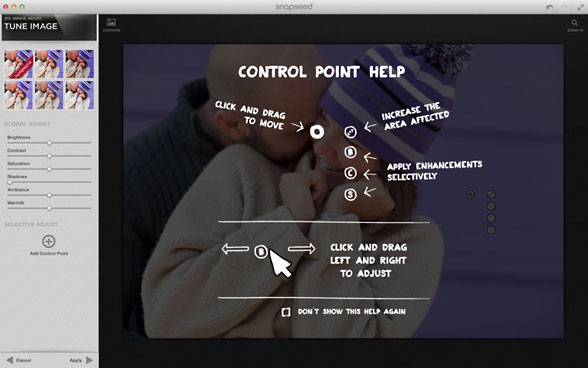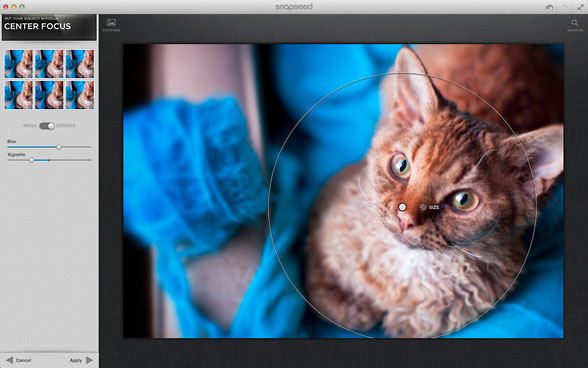Mac notebook and other portable computing is covered in The 'Book Review. iPad, iPod, iPhone, and
Apple TV news is covered in iOS News
Review. All prices are in US dollars unless otherwise noted.
News & Opinion
Rights
Apple Updates
Software
News & Opinion
Apple's Lead in Tech Support Quality Is
Slipping
PR: Apple continues to lead Dell and HP in customer service
quality for phone-based technical support, but Apple's support
satisfaction among surveyed customers dropped significantly over the
past 18 months, according to the latest study conducted by Vocal
Laboratories Inc. (Vocalabs).
In telephone interviews immediately following a support call, 54% of
Apple customers were Very Satisfied with the experience during the last
six months of 2011, compared to 44% of Dell customers and 49% of HP
customers. Apple's satisfaction score is down 19 points from the first
half of 2010, while Dell and HP have generally held steady over the
past two years.
Despite its significant decline, Apple continues to lead Vocalabs'
survey in overall tech support quality
Looking at common complaints in 2011, fewer than 1% of Apple
customers surveyed complained about the language skills of the support
technician; much lower than the 8% of Dell customers and 10% of HP
customers who reported similar issues. Many customers also complained
about the extra cost of out-of-warranty tech support, but Apple saw
fewer complaints here, too. About 1% of Apple customers volunteered a
cost complaint in this study, as compared to 6% of Dell customers and
6% of HP customers.
"Despite its significant decline, Apple continues to lead our survey
in overall tech support quality," said Peter Leppik, CEO of Vocalabs.
"But where Apple used to be well ahead in nearly every measure of
service quality, there are now areas where Apple is tied with, or even
behind, its competitors."
Link: Vocalabs Published
Research
Smartphone Sales Outnumbered PC Sales in 2011
PR: Canalys has released its full, detailed Q4 2011
country-level smart phone shipment estimates to clients, so completing
the picture for the year. One notable result was that total annual
global shipments of smart phones exceeded those of client PCs
(including tablets, which Canalys calls "pads") for the first time.

Vendors shipped 158.5 million smart phones in Q4 2011, up 57% on the
101.2 million units shipped in Q4 2010. This bumper quarter took total
global shipments for the whole of 2011 to 487.7 million units, up 63%
on the 299.7 million smart phones shipped throughout 2010. By
comparison, the global client PC market grew 15% in 2011 to 414.6
million units, with 274% growth in pad shipments. Pads accounted for
15% of all client PC shipments in 2011.
"In 2011 we saw a fall in demand for netbooks, and slowing demand
for notebooks and desktops as a direct result of rising interest in
pads," says Chris Jones, Canalys VP and Principal Analyst. "But pads
have had negligible impact on smart phone volumes and markets across
the globe have seen persistent and substantial growth through 2011.
Smartphone shipments overtaking those of client PCs should be seen as a
significant milestone. In the space of a few years, smart phones have
grown from being a niche product segment at the high-end of the mobile
phone market to becoming a truly mass-market proposition. The greater
availability of smart phones at lower price points has helped
tremendously, but there has been a driving trend of increasing consumer
appetite for Internet browsing, content consumption and engaging with
apps and services on mobile devices.
However, Canalys expects to see smartphone market growth slow in
2012 as vendors exercise greater cost control and discipline, and put
more focus on profitability. Notably, even vendors who have focused on
conquering the low-end of the market with aggressive pricing, such as
Huawei, ZTE and LG, are now placing greater attention on the higher
tiers. Flagship models aimed at raising selling prices and improving
margins will feature more heavily this year.
Apple's impressive end to the year resulted in it becoming the
leading smart phone and client PC vendor in Q4 2011, with shipments of
37.0 million iPhones, 15.4 million iPads and 5.2 million Macs. It also
smashed the record for the most smart phones shipped globally by any
single vendor in one quarter, beating Nokia's previous record of 28.3
million shipped in Q4 2010. Moreover, Apple's performance meant that it
displaced Nokia, for the first time, as the leading smart phone vendor
by annual shipments. Apple shipped 93.1 million iPhones in 2011,
representing growth of 96% over 2010. The iPhone 4S benefited from
pent-up demand resulting from the launch coming in October rather than
June, but Apple's overall volume was also buoyed by continued shipments
of the now more aggressively priced iPhone 4 and 3GS models.
Samsung also finished 2011 with a flourish. It shipped 35.3 million
smartphones in Q4 2011 under its own brand, bringing its total to 91.9
million for the year, compared to just 24.9 million in 2010. This
excludes shipments of rebranded products, such as the Nexus S and
Galaxy Nexus, which Canalys counts under the Google brand. Samsung
continued to spend big on marketing activities, and its strong product
portfolio particularly the Android-based Galaxy S II performed
well.
Despite a disappointing set of financial results, Nokia's smart
phone performance in the fourth quarter gave cause for optimism. It
shipped 19.6 million smart phones, down 31% from the record high of a
year earlier, but up 17% on Q3 2011. The total was helped by 1.2
million and 0.6 million shipments of its Windows Phone and MeeGo-based
products respectively, as well as improved Symbian Belle volumes from
competitively priced devices such as the Nokia 500, 700 and 701. Its
total smart phone shipments for the year came in at 77.3 million
globally.
"Its first Windows Phone products, the Lumia 800 and 710, along with
the recently announced Lumia 900 through AT&T in the US, have
improved the outlook for Nokia," Canalys Senior Analyst, Tim Shepherd,
observes. "They are well-designed, competitive devices that demonstrate
innovation is still alive within Nokia. But the battle is not over and
it has huge challenges ahead. Nokia must continue to build out its
Lumia portfolio with devices tailored to address all price points and
all the markets in which it aims to compete. It must hasten its
transition from Symbian to Windows Phone around the world and, with
Microsoft, promote and generate excitement for the platform and new
products. And it must succeed in attracting more developers to build
high quality, locally relevant apps."

RIM's demise in 2011 has been overplayed by some, with the company
ending the year as the fourth largest smart phone vendor and delivering
annual unit growth of 5%. There is no denying that RIM has had a tough
year, said Canalys Principal Analyst, Pete Cunningham. But when you
consider that it is transitioning to a new platform it has done well to
increase volume while remaining profitable; the latter point being
something that many other vendors struggle with. The appointment of
Thorsten Heins as CEO will bring new energy to the company while
ensuring that it does not radically deviate from its overall strategy
in this transitional year. However, 2012 will become even more
competitive and RIM needs BlackBerry 10 devices out there to ensure it
retains its status as a major player.
At a platform level, Android accounted for 52% of global smartphone
shipments in Q4 2011, with iOS representing 23% and Symbian 12%.
Android was also the leading smartphone platform by volume for the
whole year, accounting for 49% of all devices shipped in 2011 and ahead
of iOS with 19% share and Symbian with 16%. Collectively, Android smart
phone shipments grew 149% year on year in Q4 2011 to 81.9 million
units, resulting in a total of 237.8 million for the full year, up 244%
on 2010. Samsung's success and focus on Android have contributed
substantially to the growth of the platform, but other vendors, such as
Sony Ericsson, Huawei, Motorola, LG and particularly HTC, have also
seen significant growth in their Android volumes over the course of
2011.
OS X Ported to ARM by Apple Intern
Publisher's note: Despite the sensationalist headlines on other
websites, bear in mind that this was done two years ago and that Apple
has been porting the core of OS X to ARM for at least five years -
that's what's at the heart of iOS, which was introduced with the iPhone
in 2007. This really isn't news. dk
The Register's Anna Leach reports that a Dutch computer science
student's work from 2010 has stirred the old rumor that Apple may ditch
Intel and power its MacBooks with ARM processors.
Tristan Schaap's bachelor thesis, Porting Darwin to the MV88F6281, at the
Delft University of Technology describes work he did at Apple as an
intern: Getting the core of Mac OS X to run on an MV88F6281
processor, an ARM926EJ-S-compatible component made by Marvell, rather
than silicon from Intel.
Written in after three months slaving away in Apple's Platform
Technologies Group in Cupertino, Schaap's 16-page dissertation was
embargoed for a year and published in August 2011 and noticed by
AppleInsider earlier this week.
Link: Mac OS X ARM
Port by Apple Work Experience Kid Revealed, The Register
Link:
Apple Intern's Thesis Leaks Secret Project to Port Mac OS X to ARM
Processors, AppleInsider
Tex-Edit Plus: A Simple Yet Powerful Text
Editor
Mac 360's Ron McElfresh has posted a nice tribute to your humble
editor's favorite and indispensable Mac OS text-crunching application,
Tom Bender's superb $15 shareware Tex-Edit Plus.
McElfresh notes that he has about a dozen text editors, but uses one
about 80% of the time, noting that he began using Tex-Edit Plus on his
Mac somewhere back in the last century, finding it less cumbersome and
complex than the equally venerable - and to some degree
category-defining - BBEdit.
Recently updated for OS X 10.7 Lion compatibility, Tex-Edit, unlike
many text editors or even word processors, is scriptable, and a full on
ASCII text editor that also speaks AppleScript, Automator, and has
powerful tools to clean up messy text. In a nod to modernity, Tex-Edit
Plus also has two floating palettes for quick access to built-in
editing Tools and Script Tools supported by its excellent and
integrated implementation of AppleScript.
Tex-Edit Plus is also highly configurable with extensive preference
choices, with dozens of other options available at the document level,
including Tabs, Save options, Printing, imbedded graphics, video, and
audio, and is even Speech-aware using the Mac's built-in voices.
You can author or record your own AppleScripts, choose from dozens
of built-in Automator actions, or download dozens of off-the-shelf
AppleScripts for an array of functions and shortcuts from the Tex-Edit
Plus Archives (see below).
Editor's note: Do I sound enthusiastic? I am definitely a fan.
cm
Link: An Old Mac Text
Editor I Don't Need but Can't Throw Away, Mac 360
Link: Tex-Edit Plus: Powerful Styled Text
Editing for OS X and the Classic Mac OS, Low End Mac
Link: Tex-Edit Plus
The Tex-Edit Plus Free AppleScript Archives
Here's where you'll find lots of free AppleScripts to use with
Tex-Edit Plus (TE+).
Download your choice from 199 diverse and useful AppleScripts from
the Archive, all written by and for Tex-Edit Plus users, all free to
download.
Tex-Edit Plus (not to be confused with Apple's "TextEdit") is the
remarkable and award-winning shareware text editor for Macintosh
computers from Trans-Tex Software's Tom Bender.
Among its many amazing features is its ability to use AppleScripts
via an AppleScripts menu. AppleScripts written for Tex-Edit Plus
enhance and extend its functionality and versatility and enable users
to customize Tex-Edit Plus for their own specific text creation and
editing purposes.
Browse site by using Script Category links on the homepage, or use
the search box at the top of every page to look for something
specific.
Enjoy.
Link: Tex-Edit Plus Archives
Rights
Google and Twitter Are Censoring the Web
PC Mag's John C. Dvorak says the future of the Internet seems bleak,
but Americans are too busy playing Angry Birds to notice, noting that
Twitter is essentially censoring its services in various countries to
abide by local laws, and Google's Blogger.com intends to do the same
thing - and this will carry over to Google+.
"This is the beginning of the end for the Internet," Dvorak
predicts, citing a Fox News report that Google can now make content on
its Blogger platform selectively available to users based on local
laws, in a move similar to Twitter's new country-specific censoring
ability, which prompted a backlash from critics. Under the changes,
Google is redirecting users to country-specific domains for its Blogger
sites, which will allow certain content to be blocked in countries
"where censorship is required" - a phrase that speaks volumes.
Dvorak suggests that acceptance and tolerance of the notion of
national censorship on a country-by-country basis will eventually lead
to a completely censored and dumbed-down Internet, only useful for
approved shopping, Twitter, and Facebook, the rationale being that we
don't need an out-of-control information exchange in which fake
information can be used to stir up the public, so content must be
censored to protect the public from getting alarmed by crazy
information. He further suggests that this dismal scenario will
eventually lead to Internet licenses being required for blogging,
podcasting, and just about everything else - and necessity to register
with the government just to use the net.
This will happen, Dvorak observes, because evidently some 99.9% of
the American populace don't give a crap, few ever doing deep searches
or much of anything more than checking Facebook, buying stuff at
Amazon, playing Angry Birds, and photo sharing.
Editor's note: Unhappily, I suspect Dvorak has the future nailed.
cm
Link: Censoring the Web
Every Which Way
'You Will Never Kill Piracy'
Forbes' Paul Tassi says now that the SOPA and PIPA fights have died
down, and Hollywood prepares its next salvo against Internet freedom
with ACTA and PCIP, it's worth pausing to consider if the war on piracy
could actually be won.
Tassi says it can't is the short answer, and one that these
companies do not want to hear as they put their fingers in their ears
and start yelling. However, Tassi maintains that as technology
continues to evolve, the battle between pirates and copyright holders
is going to escalate, and pirates are always going to be one step
ahead.
He notes that legislation is not the answer. Piracy is already
illegal in the US and most places around the world, yet it persists,
not only underground, but often in plain sight.
What to do? Go the other direction, says Tassi. Realize that piracy
is a service problem.
He also observes that no matter how much the movie and music
industries hold their breath, stamp their feet, and doggedly claim that
each download is a lost sale, that assertion is patently absurd. The
primary problem movie studios have to understand is that everything
they charge for is massively overpriced, and after the SOPA and PIPA
debacle, Hollywood looks like a dinosaur, as out of touch as someone
trying to kill radio or VCRs.
Link: You Will Never
Kill Piracy, and Piracy Will Never Kill You
Apple Updates
Snow Leopard Security Update 2012-001 Version 1.1
Fixes Rosetta Issues
Along with the OS X 10.7.3 update (which itself has proved to be
bug-plagued), Apple released Security Update 2012-001 for those of us
who continue to use OS X
10.6 Snow Leopard.
Soon it was being posted in forums that the Security Update was
breaking Rosetta support for legacy PowerPC applications. After
installing the update, users were reporting that Rosetta applications
would no longer work properly - unable to open, crashing if they did,
unable to create and save files, or unable to print.
Last weekend, Apple released Security Update 2012-001 v1.1, an
update to the earlier update.
Apple recommends Security Update 2012-001 v1.1 for all Snow Leopard
10.6.8 systems users to improve the security of Mac OS X, noting
that version 1.1 of this update removes the ImageIO security fixes
released in Security Update 2012-001 that had addressed mishandling of
certain kinds of TIFF image files.
For information on the security content of this update, visit:
http://bit.ly/zVPN2r
Snow Leopard users can download this update via Software Update, or
from Apple's Downloads page.
File Size: 192.73 MB
System Requirements: Mac OS X v10.6.8
Link: Security Update 2012-001 (Snow
Leopard)
EFI Update 1.8 for Mid 2010 iMacs
iMac EFI Firmware Update 1.8 enables Lion Recovery from an Internet
connection on iMac (Mid 2010) Models.
For more information about Lion Recovery, visit this website:
http://www.apple.com/macosx/recovery/
System Requirements: OS X Lion 10.7.3
Link: iMac
EFI Update 1.8
Software
Snapseed Photo Editor for OS X

PR: Snapseed for Mac OS is a photo app designed to enhance,
transform, and share photos with ease using advanced features, such
as:
- Easily adjust your photos with the Tune Image filter, now featuring
Auto Correct and Selective Adjust for precise editing
- Experiment with fun & innovative filters like Drama, Vintage,
Grunge, and Tilt & Shift
- Add Image Borders for a finishing touch
- Share your creations via email, Facebook and Flickr
Features
Basic Adjustments
- Tune Image - Easily browse and adjust your photos with a single
click using Auto Correct, tweak your photos to perfection with Tune
Image or selectively adjust specific areas of them with revolutionary
Control Points.
- Use Ambience to create depth and vibrancy that uniquely adapts to
colors and textures. Adjust White Balance, Saturation, Contrast,
more.
- Crop, Straighten & Rotate - Rotate 90 and/or straighten photos
and easily crop images to remove distracting parts of your photo. Now
includes standard aspect ratios.

Creative Enhancement
- Black & White - Get that classic Black and White look with this
darkroom-inspired filter.
- Vintage - Make any photo look like a vintage color film photo from
the 50s, 60s or 70s.
- Drama - Add style with a custom effect specifically tailored to
your photos.
- Grunge - Give your photos a totally unique, hip, and dingy
look.
- Tilt & Shift - Create the classic compressed depth of field
look of a miniature set or emulate the swings and tilts of a large
format camera.
- Details - Enhance details with traditional sharpening or the unique
Structure control found in the Nik Software professional products.
- Center Focus - Draw attention to the subject of your photo by
blurring the surrounding background.
- Frames - Add stylized borders to photos for the perfect finishing
touch.
Sharing:
- Email - Send images at original resolution.
- Social - Share on Facebook and Flickr.
Help & Support
- Get started quickly with help overlays, tutorial guide, and videos.
If you ever get stuck, our support team can help.

New in Version 1.0.1
- fixes a potential crash during Facebook authentication
- fixes a potential problem with wrong output dimensions that may
have occurred after cropping
- fixes a problem that may have occurred when entering the Crop
Filter while the image was zoomed in
System requirements:
- Mac OS 10.6.6 and 10.7.2
- Requires 64-bit processor (Intel Core 2 Duo or later
- JPEG, TIFF (in RGB color mode), and RAW file formats
$19.99
Link:
Snapseed
Desktop Mac
Deals
Low End Mac updates the following price trackers monthly:
For deals on current and discontinued 'Books, see our 13" MacBook and MacBook Pro,
MacBook Air, 13" MacBook Pro, 15" MacBook Pro, 17" MacBook Pro, 12" PowerBook G4, 15" PowerBook G4, 17" PowerBook G4, titanium PowerBook G4,
iBook G4, PowerBook G3, and iBook G3 deals.
We also track iPad,
iPhone, iPod touch, iPod classic, iPod nano, and iPod shuffle deals.







